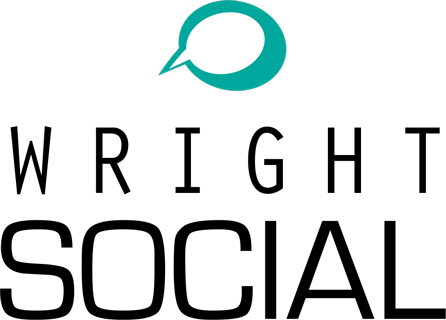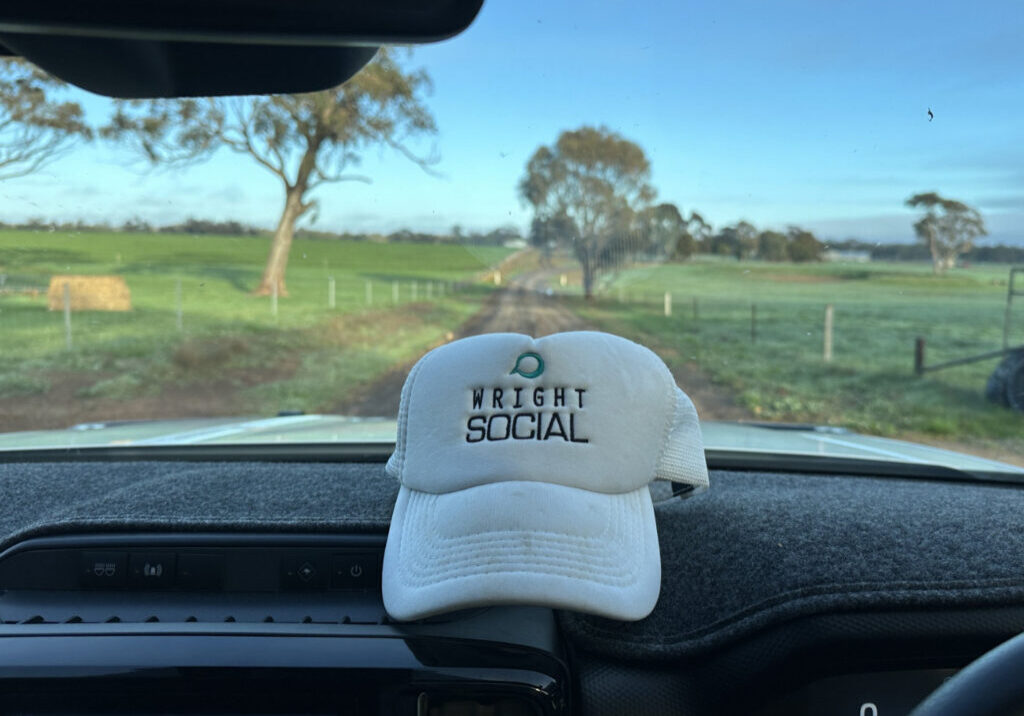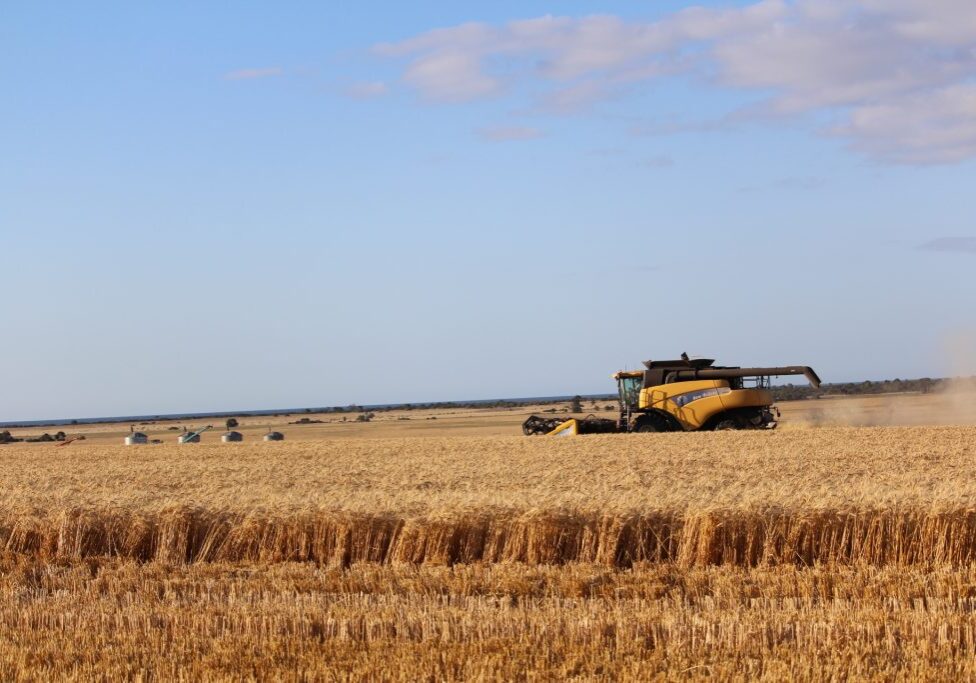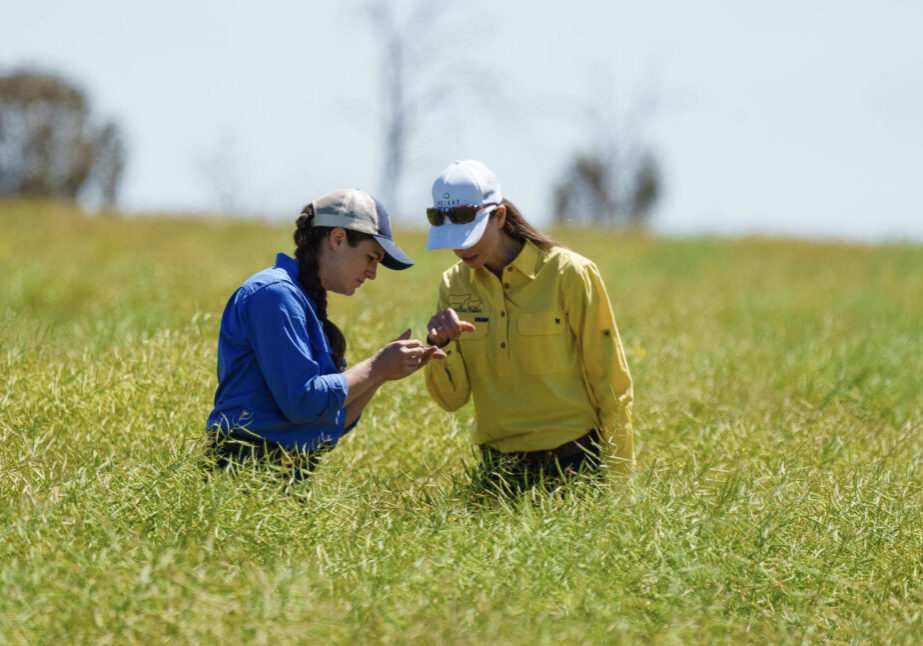Wondering what the best advertising choice is for your agribusiness?
Do you feel like print advertising is getting the reach but maybe not the return?
In this blog we’re going to look at a few key factors that can help you better understand both mediums.
Social media advertising has flourished marginally in recent years, which means the algorithms have been designed to help YOU, the seller.
We look at some top line concepts to better understand the value of each and how it applies to your agri-rural business, association or group:
- Advertising spend
- Customer path to purchase
- Engagement
- Targeting
- Format & Customer Experience
- Measurement
Read on to really understand the difference between traditional newspaper and social advertisement, and how your business can better position itself to take advantage of both.
PRINT IN AG 101
Rural newspapers still have a great following. In fact, the Quantitative Agricultural Readership Survey (QARS) conducted through July and August 2016 confirmed that ACM Agricultural Weeklies such as North Queensland Register, Queensland Country Life, The Land, Stock & Land, Stock Journal and Farm Weekly were still the leaders in rural news.
The report shows that 84% of farmers every month “prove print to be the most effective platform to target this sector.” The audience reads 78% of each issue, and not just the parts about the industry they’re involved in. It also says they refer back to each issue approximately three times.
But what are the costs to print an ad? There’s a lot to consider here, including accountability, numbers, building your own audience, interaction, feedback, engagement, relationships…
We conducted our own research and came away with three newspaper advertising prices.
| Newspaper A | Newspaper B | Newspaper C | |
| Full-page ad cost | $4405 inc GST | $5140 inc GST | $5525 inc GST |
| Half-page ad cost | $2370 inc GST | $2569 inc GST | $2762 inc GST |
| Quarter-page ad cost | $1373 inc GST | $1284 inc GST | $1381 inc GST |
| Circulation | 1 state | 1 state | 1 state |
| Reach per week | 58,000 people | 16,000 people | 18,000 people |
| Readers located in rural areas | 85% | 76% | 67% |
Each of these newspapers do not automatically put your printed ads online; there are further options to choose from with online advertisement and therefore at times this means more money needs to be spent.
The stats express readership of traditional newspapers in rural areas is still high – much higher than metropolitan areas – however does that mean readers are looking at your ad?
So how does newspaper advertising stack up to social media?
Advertising Spend
Reports have shown that on average, a newspaper advertisement will cost $32 to reach 1,000 people. In comparison, Facebook ads, for example, cost around just 25 cents to reach the same number.
It can take up to five touchpoints for a consumer to recognise and warm to your brand.
For a long time, the most cost-effective way for an ag business to achieve this and generate calls was simple: buy ads. They were a bargain and it wasn’t expensive. “Marketing” was “advertising” back in the day.
The internet has changed the game.
It allows us to understand precisely what it is our audience wants, knows and believes and put it in front of them in a way that builds trust over time and generates lifelong customers.
Smart social media marketers make it easy for those they seek to work with by helping position an offering in a way that resonates and is memorable.
If you were to pay for five full page colour ads in a newspaper today, you’re looking at the same cost for a 12-month to 2-year social media advertising campaign roll out – whoa, how social media has changed this game!
I believe that if you are a big brand with a decent marketing budget that can afford to appear ongoingly – and hence build a sequential relationship with omnipresence from week to week by being visible in the paper – then this isn’t such a bad approach.
It’s why we see the big brands spending hundreds of thousands on traditional advertising, such as billboards. They are building positive brand associations in the minds of their consumers – think Toyota or John Deere.
But if you have a modest budget, then social media is going to be far more effective to stay top of mind (and target people with the right message at the right time in their buying journey!) – particularly if you are focusing on the correct channels that best target a response from your ideal customer.
Advertising platforms such as Facebook will tell you how many times your ad has reached an individual, giving you an accurate assessment of how warm that customer is.
Customer Journey – ROI
It’s nearly impossible for newspapers to account for the customer journey.
Consumers will transition into your marketing funnel at different phases. They may enter when they first become aware of their problem (awareness phase) or join further on in their journey when they already know what they want and bee-lining for purchase (purchase phase).
This means when you advertise in the newspaper you are largely guessing on what message they want to hear, and how ready your audience is to buy aka the shot-gun approach.
As a marketer your job is to develop the “right” content to show at the “right” time in your ideal client’s decision-making process – not blast them with a message that says, “we’re the best”, “look at this deal” or “buy now!”
You need to identify which platforms make the most sense for you.
Then there’s organic and paid traffic sources and there are key strategy drivers for each.
Engagement
The other thing newspapers unfortunately cannot achieve is two-way simultaneous engagement. The ability for someone to interact in real-time with your ad.
Newspaper advertising is limited to one-way messaging unless your writing to the editor. You are relying on your ideal customer to read your ad and take an action.
With social media you can create flows and influence the process.
For example, if someone visits your website by clicking on your ad, you can then be proactive and engage them further – eg. have a messenger bot will prompt a question to the browser (whilst at your website) so you can engage in a sale conversation in real-time and increase the chances of making the close.
Or if someone comments on your ad or post – another opportunity to engage that person within seconds.
The ability to close a lead is impacted by the ability to act in a timely fashion. Social media makes this process intuitive and immediate.
For example, with a lead ad, an ad can generate a name and number. This can be instantly emailed to the sales representative for a follow-up call within minutes. Here you are asking for them to leave their number, a micro commitment to start the engagement.
In contrast – and this is what we love about Facebook advertising – it is possible to have a strategy to catch consumers at each entry point.
This means you can design advertising messages to educate and market to prospects at each stage of the buying decision process.
Not only are you building an audience, but you are no longer wasting money presenting offers in front of people who are not vaguely interested in your solution.
Once more, you’re reaching your target market! Facebook Ads have the data to ensure you can measure every dollar being spent with each resultant action.
For example, a client of ours invested in Facebook Ads. On average, it cost 4 cents for someone to spend 30 seconds with us in the advertising video, representing a huge trust-building progression.
It cost 2 cents for someone to watch our video for 10 seconds. These are people who are in our specific target market. Overall, this company spent 2 to 6 cents per viewer for the Facebook Video Ads – traditional papers can’t offer video engagement.
Specific Targeting
Everything on social media can be measured and targeted. It has the ability to laser-target various groups of people based on a huge range of factors: age, gender, location, interests, behaviours, jobs, income and even more based on their Facebook activity.
This means you are using the accuracy of a sniper rifle as opposed to a shotgun – using less shots whilst making the shot you do have count.
Or let’s put it another way. If you’re a good fisherman then you’ll know that having the right rod, bait, location and timing is a huge advantage to just throwing a net over a large sea hoping to reel one in. You’ll know that to catch a whiting requires a different technique than to snap up a snapper. The same applies to Facebook Advertising.
We also know that the more experienced the fisherman with a particular type of fish (aka audience profile) often trumps the novice. The same applies when you choose your advertising agency!
Facebook also uses data from third-party companies (at the consent of their users) that categorise its users based on the types of websites they visit.
Another feature to social media advertising is Geotargeting: this allows your brand to target people who are within a certain radius of your business location, and can help businesses attract more walk-in customers, drive more purchases and build greater loyalty.
It figures out what specific areas hold more potential clients and it gives you the confidence in approaching them because you know they have an interest in what your ag brand offers.
Format & Customer Experience
Newspapers have a limited format of plain text and images. There’s no sound, no video, no user experience.
With social media, there are so many ways to sell your brand and products: video ads, audio bites, interactive articles, podcasts, ‘live videos’, webinars – the list goes on.
It offers a wide variety of ways to draw your audience in while improving the customer experience with your brand – this not only helps your sales but can put you above your competition.
Over 60% of people are visual learners. Social media provides us with the opportunity of a higher conversion rate because you have the opportunity to capture, as well as humanise your brand through more visually attractive ads.
People like to interact with people, not things. Leverage this with social media and you will no doubt see better results than traditional ads!
Measurement
Lastly, Facebook and Instagram offer an array of tools to track your campaigns and advertisements.
For example, each campaign (no matter if you spend $1 or $1000) delivers key metrics keeping you informed of performance.
At the actual individual ad level you can assess how many impressions, people reached, frequency, relevance, clicks on links (be it your website or specific sales page), quotes requested, and even the number of people engaged with your ads.
This empowers data-driven decisions making your ad spend even more effective to generating the results you’re after.
This in turn allows you to judge what’s working and what’s not. From here you can alter current campaigns and construct new ones accordingly.
This measurement also gives you a sense of how your brand is traveling through word of mouth – but not in the traditional way. People share their experiences on social media with hundreds of their friends, which could go on to thousands of their friends’ friends.
So, now you are more the wiser, take some time to properly assess your where your advertising dollars are going and what they are doing for you.
This list is just a handful of reasons to help you understand the difference in benefits between social media marketing over traditional newspaper ads.
If you’re someone in ag who’s curious or serious about delving into social media advertising to see measurable results for your business, we invite you to book a FREE one-on-one strategy call with Heidi Wright (Director of Wright Social) to discuss how we can help your business increase visibility and generate leads in 2021.
—
Take a minute to leave a comment – we’d love to hear from you!
What benefits have you seen from social media marketing? Let us know in the comments below!
This blog was written before the Apple iOS 14 Policy updates. The updates will impact targeting, optimisation and measurement results for these users. Facebook is currently adapting to these changes throughout early 2021 as we find out more information.





Leave a Reply